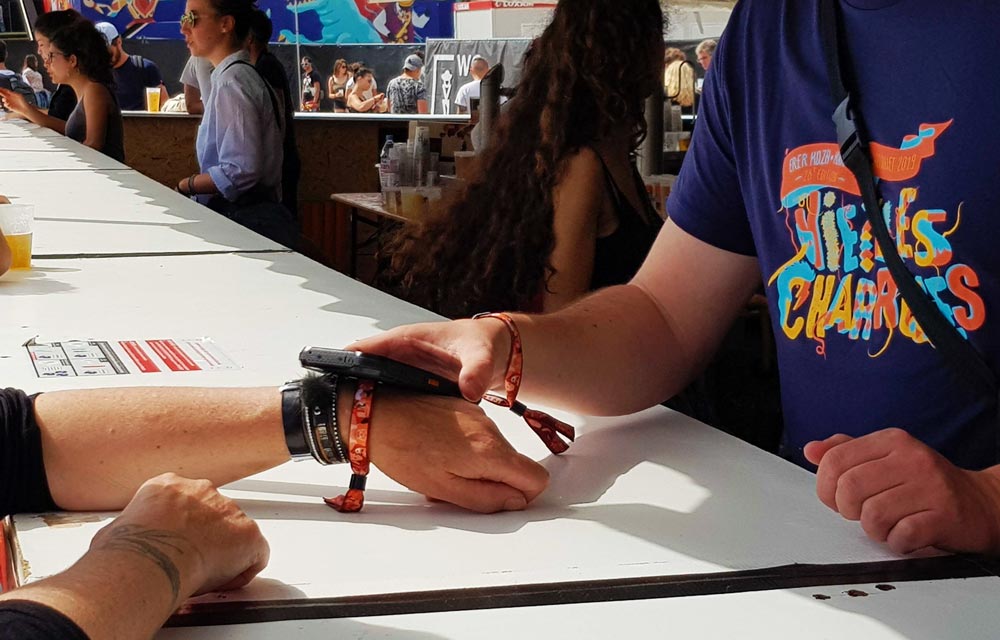Organising a festival is stimulating and rewarding but equally complex and demanding. To help you with the task, we give you all our tips on how to organise a festival.
To dig deeper, download the Practical Guide for Festival Organisers for free.
Summary
1. Define the main lines of the festival
Organising a festival involves a series of essential steps. Before launching the ticket sales, you have to define the main lines of the festival you want to organise.
a) Raison d’être of the festival
Start by answering the question “Why do I organise my festival? Your answer will help you define goals, allowing you to calculate your event ROI.
b) Type of festival
The second step is to imagine what your festival will look like. The type of festival, its duration, how it will take place, the target audience, etc. This is the time to visualise the event that responds to why you organise it and your main goals.
You should also decide the festival’s date, time, and venue. Take your time to make sure your choice appeals to your target audience and makes them want to buy tickets for your festival.
c) Festival budget
You can’t start organising a festival without addressing budgeting. To ensure the success of your festival, you need to take your budget seriously and be realistic.
After analysing your target audience, their interests and expectations, you will have a rough idea of the activities and entertainment you can include. This guidance will allow you to prepare your budget considering the expenses you must cover for each line item (artists’ cache, venue rental, suppliers, insurance, staff, etc.).
Don’t forget to include a safety margin in your budget. For this safety margin, allow for an extra 15% of the calculated total.
To make it easier, you can look at our article to help you prepare a realistic budget for your festival.
Fund the festival
Once the budget is dressed, it is time to secure the necessary funds to cover the projected costs.
If you act well in advance, several funding opportunities are available. For example, you can:
– Create a presentation and send sponsorship requests.
– Have patrons who can bear part of the expenses.
– Apply for grants.
– Open your event to external suppliers and charge them for commercial rights.
– Call for the generosity of different people with donation campaigns and crowdfunding.
– Etc.
2. Finding a name for your festival
Having defined the main lines of your festival will help you find a suitable name.
When reflecting on the name, consider the following criteria:
● Ease of pronunciation: Attendees need to be able to pronounce your festival name easily. Is it easy to remember? Would a child be able to say it?
● Ideal length: For the name of your festival to be powerful and remembered, it has to be of adequate length; generally, it should be between 10 and 30 characters.
● Understandable: You need your target audience to be able to understand the name of your festival. Keep in mind the characteristics of your target audience: their universe, customs and traits. The name has to be liked and make sense for this segment of the population.
But above all, the name of your event must please you!
3. Sell the tickets
Whether you decide to charge to attend your festival or make it a free event, it is advisable to set up an online ticket sale or registration system to encourage your target audience to take action.
An online ticketing system allows you, among other things, to:
● Follow up on the expected attendance before the event and ensure that the capacity of the chosen venue is respected.
● Know the “no-show” rate (people who have acquired their ticket but do not attend the festival).
● Sell complementary services (access to the campsite, access to the VIP area…)
● Set different rates and categories for your various audiences.
● Generate income before the festival to finance the project.
● Get to know the attendees better and be able to contact them before, during and after the festival.
4. Surround yourself with professionals
You almost certainly won’t take on all the tasks related to your festival alone. Surround yourself with the best!
To help you create a memorable event, surround yourself with specialists and event professionals who can take you by the hand. Optimise the success of your festival by choosing them with care and defining their roles and tasks in detail.
Among the professionals and specialists you will need to count on are:
● Production (president, treasurer, communication manager, programming manager, logistics manager…) and volunteers.
● Service providers (audiovisual, catering, animation, access control…)
● Programming (the artists and speakers who will participate in your festival).
5. Communicate before the festival
Maximise your chances of attracting a maximum of festival-goers by communicating well in advance.
You have several resources at your disposal. Select the ones that best fit your target audience and their habits. Here are some ideas for communication channels:
● Optimised website
● Mailing
● Advertising (online or print)
● Social networks
● Media (press, radio, TV)
● Partners
Attract your target audience by capturing their attention! Networks, posters, radio… Test and adjust your strategy based on results. Julie, Project Manager – Weezevent
6. Optimise your organisation
For the festival to run correctly, you must plan your organisation step by step.
It’s essential that you take the time to plan the schedule of your event. Be as precise as possible, providing details for each and every moment. This step can be long and tedious at times, but it will give you a complete overview of the order of events at your festival.
Think of the ideal schedule for your festival in good time. What will be the key moments? Every moment with an activity scheduled at your festival (a concert, a conference, an activity…) has to have its own organisational plan. Planning everything in advance allows you to maximise your chances of being able to hire your dream speakers and artists.
Also, plan the layout of the event venue, your communication and the organisation on D-Day.
7. Don’t forget the post-festival steps
Of course, the organisation of your festival does not end when the attendees are gone! The “post-event” organisation is as essential as all previous work.
Plan the venue’s disassembly and cleaning when the event is over. You can hire a cleaning company to help you with this. However, cleaning during and after the event is everyone’s business. Make the whole team aware and involve them in cleaning the venue during the festival.
Organise meetings with the various actors involved in the festival. Team, volunteers, suppliers, partners… Take stock of your collaboration, and define areas for improvement together for the subsequent editions.
Post-event communication is as essential as pre-festival communication.
Right after your festival, it’s also the ideal time to ask for feedback from festival attendees through an online questionnaire, thanking them for attending. You can also establish a means of communication for attendees who have lost personal items during the festival —for example, a specific email address, phone number, or a post on social networks.
Don’t hesitate to create content related to your event. Continue to feed the event’s social media accounts throughout the year with photos and videos taken during the festival to create a community around it and boost attendance in the upcoming edition.
8. Download the practical guide to organising your first festival
Has this article made you want to organise your first festival, and would you like to read more expert tips and advice?
We offer you the “Practical Guide for Festival Organisers“: a free white paper with rich and varied content to guide you through all stages of your festival.



